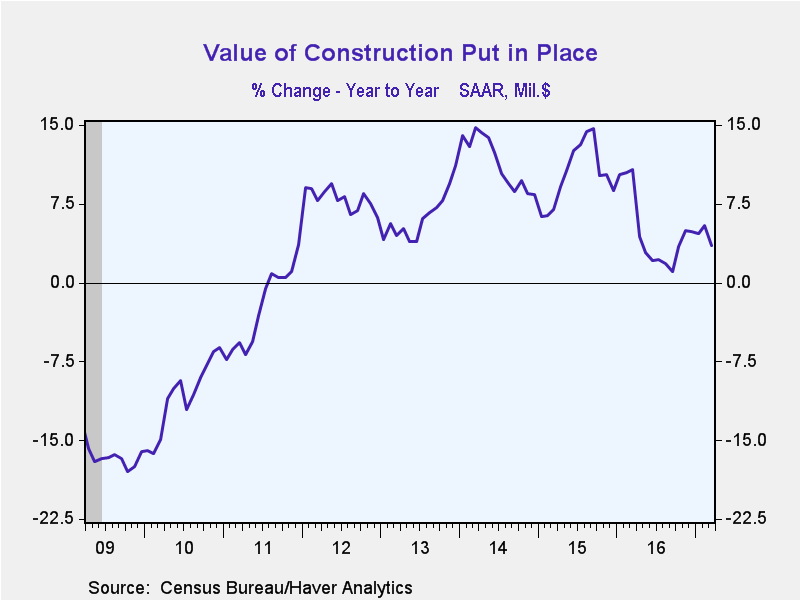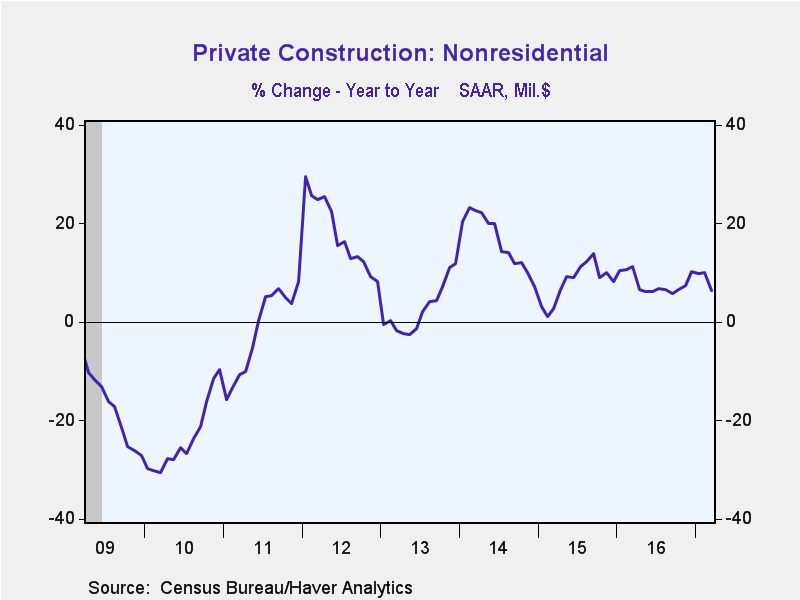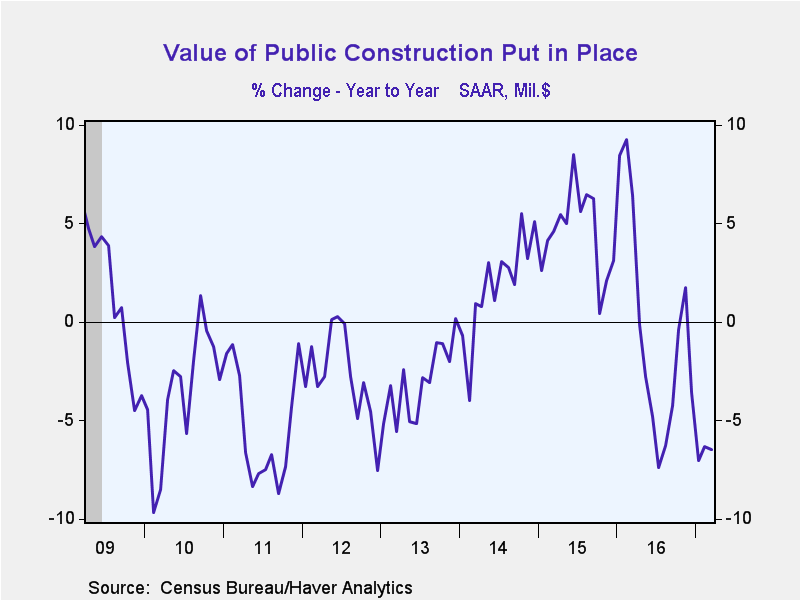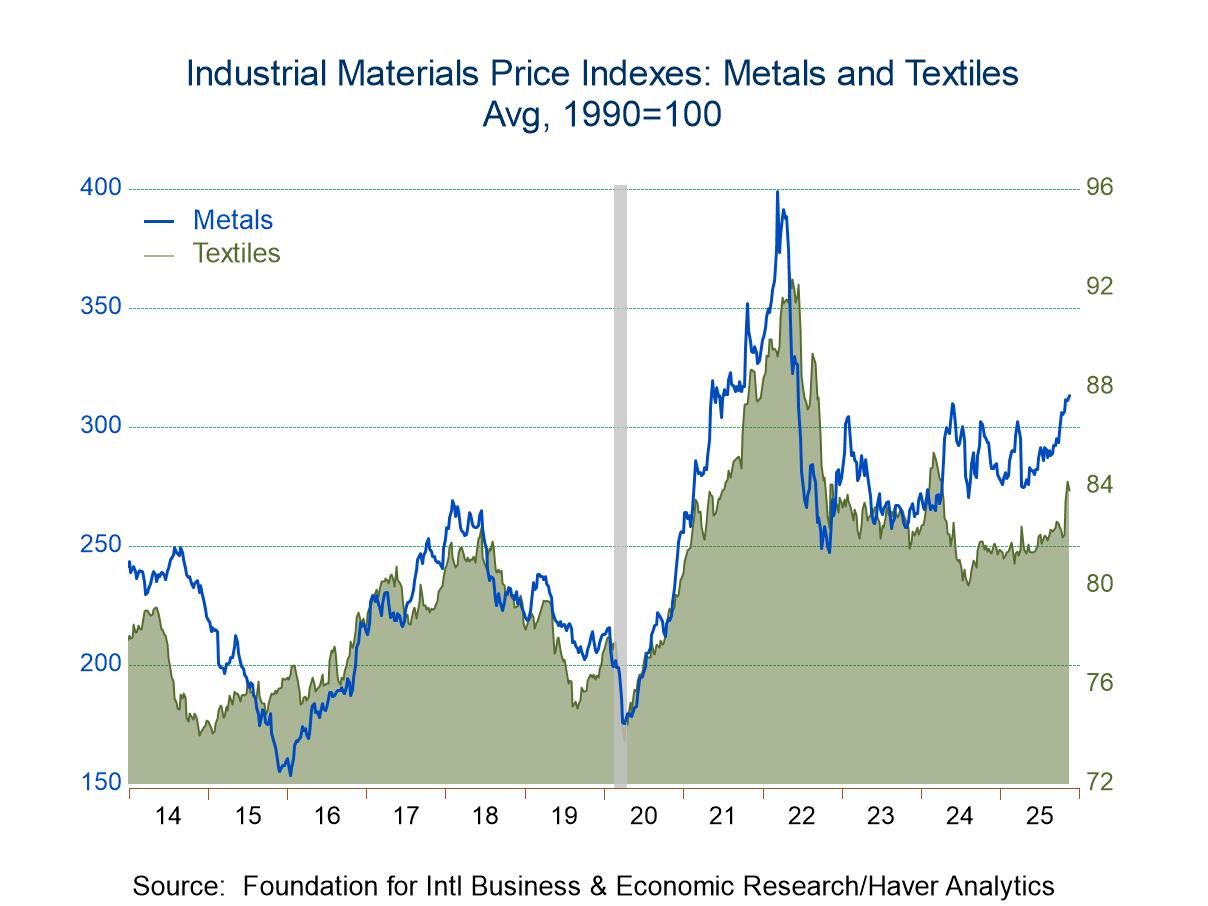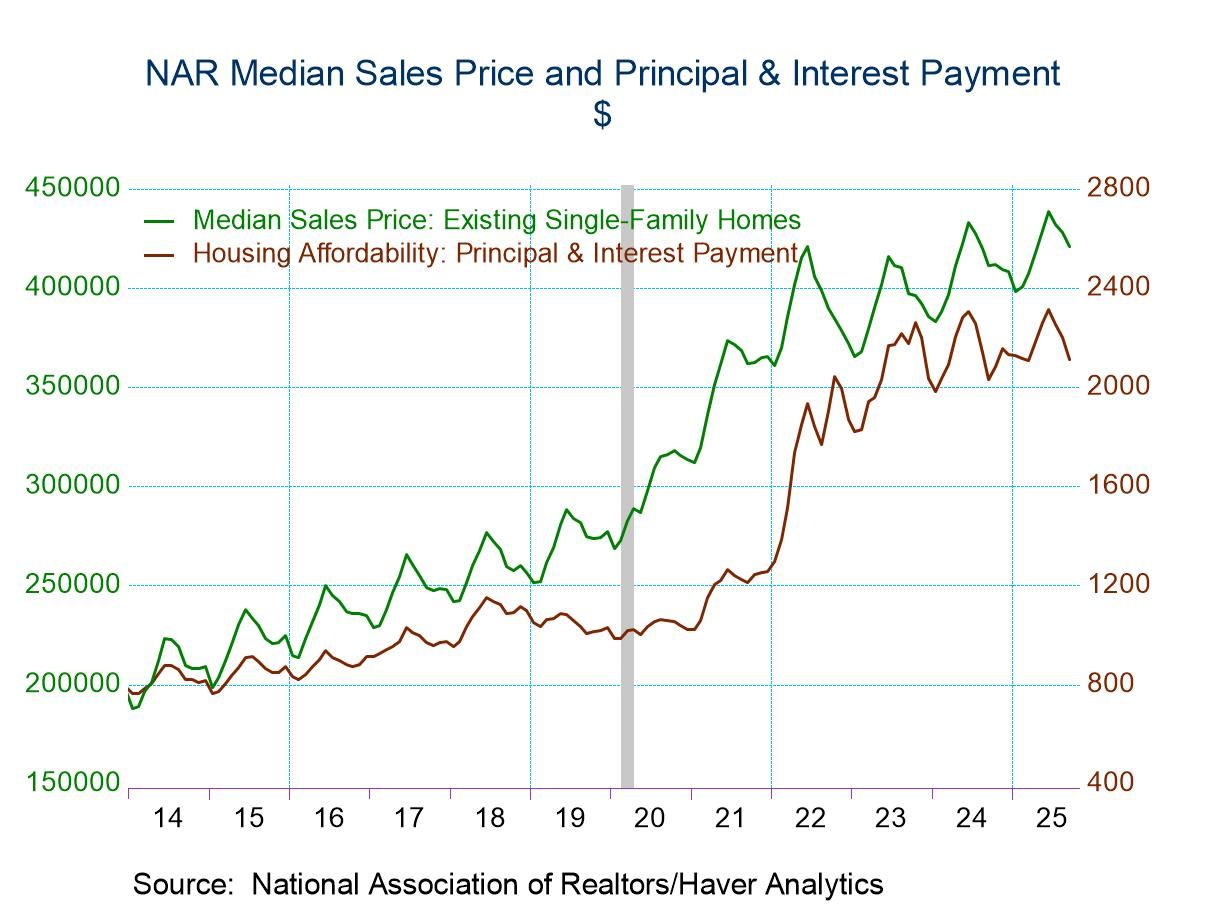 Global| May 01 2017
Global| May 01 2017U.S. Construction Spending Slips
by:Tom Moeller
|in:Economy in Brief
Summary
The value of construction put-in-place eased 0.2% (+3.6% y/y) in March following 1.8% and 0.8% increases during February & January. These latter two figures were revised up from 0.8% and -0.4%, respectively. The latest figure compares [...]
The value of construction put-in-place eased 0.2% (+3.6% y/y) in March following 1.8% and 0.8% increases during February & January. These latter two figures were revised up from 0.8% and -0.4%, respectively. The latest figure compares to expectations for a 0.4% rise in the Action Economics Forecast Survey.
Private sector construction activity remained unchanged (7.0% y/y) following increases of roughly 1.7% during the prior two months.
Residential building rose 1.2% (7.5% y/y) after five months of strong gains. Multi-family building increased 2.0% (7.4% y/y) in the wake of two months of even stronger gain. Single-family building improved 0.3% (4.7% y/y) following four months of strong increase. The value of improvements increased 2.2% (11.8% y/y).
Nonresidential building activity fell 1.3% (+6.4% y/y), after two months of strong increase. Office construction declined 2.6% (+17.7% y/y), while commercial construction fell 3.2% (+12.7% y/y). These declines contrast to strength from 2011 to 2016. Manufacturing sector construction improved 0.5% (-9.8% y/y) and health care building rose 1.5% (-1.0% y/y). Power plant construction eased 0.6% (+8.2% y/y) after a 3.3% rise.
Public sector building activity declined 0.9% (-6.5% y/y) following a 2.3% increase. Educational facility spending declined 2.0% (-2.6% y/y). Transportation facilities building was off 4.0% (-13.7% y/y) and office building fell 1.8% (+1.3% y/y). Highways and streets, about one-third of total public construction, improved 0.5% (-2.4% y/y) after February's 3.8% jump.
The construction spending figures are in Haver's USECON database and the expectations reading is contained in the AS1REPNA database.
| Construction Put in Place (SA, %) | Mar | Feb | Jan | Mar Y/Y | 2016 | 2015 | 2014 |
|---|---|---|---|---|---|---|---|
| Total | -0.2 | 1.8 | 0.8 | 3.6 | 4.8 | 10.3 | 11.4 |
| Private | 0.0 | 1.7 | 1.6 | 7.0 | 6.7 | 12.5 | 15.4 |
| Residential | 1.2 | 2.5 | 2.1 | 7.5 | 5.6 | 16.8 | 14.6 |
| Nonresidential | -1.3 | 0.8 | 1.1 | 6.4 | 7.8 | 8.1 | 16.3 |
| Public | -0.9 | 2.3 | -1.7 | -6.5 | -0.5 | 4.5 | 1.9 |
Tom Moeller
AuthorMore in Author Profile »Prior to joining Haver Analytics in 2000, Mr. Moeller worked as the Economist at Chancellor Capital Management from 1985 to 1999. There, he developed comprehensive economic forecasts and interpreted economic data for equity and fixed income portfolio managers. Also at Chancellor, Mr. Moeller worked as an equity analyst and was responsible for researching and rating companies in the economically sensitive automobile and housing industries for investment in Chancellor’s equity portfolio. Prior to joining Chancellor, Mr. Moeller was an Economist at Citibank from 1979 to 1984. He also analyzed pricing behavior in the metals industry for the Council on Wage and Price Stability in Washington, D.C. In 1999, Mr. Moeller received the award for most accurate forecast from the Forecasters' Club of New York. From 1990 to 1992 he was President of the New York Association for Business Economists. Mr. Moeller earned an M.B.A. in Finance from Fordham University, where he graduated in 1987. He holds a Bachelor of Arts in Economics from George Washington University.


